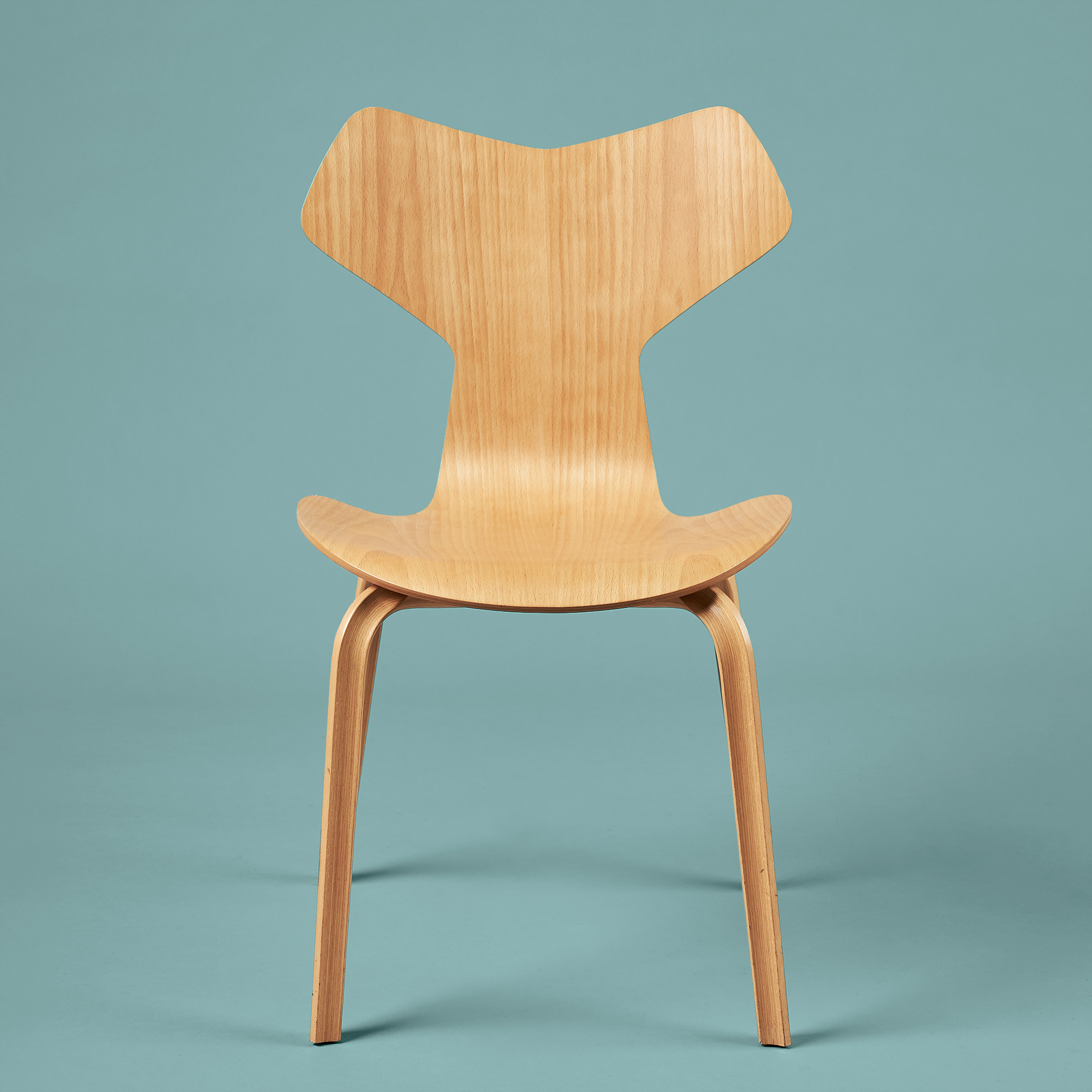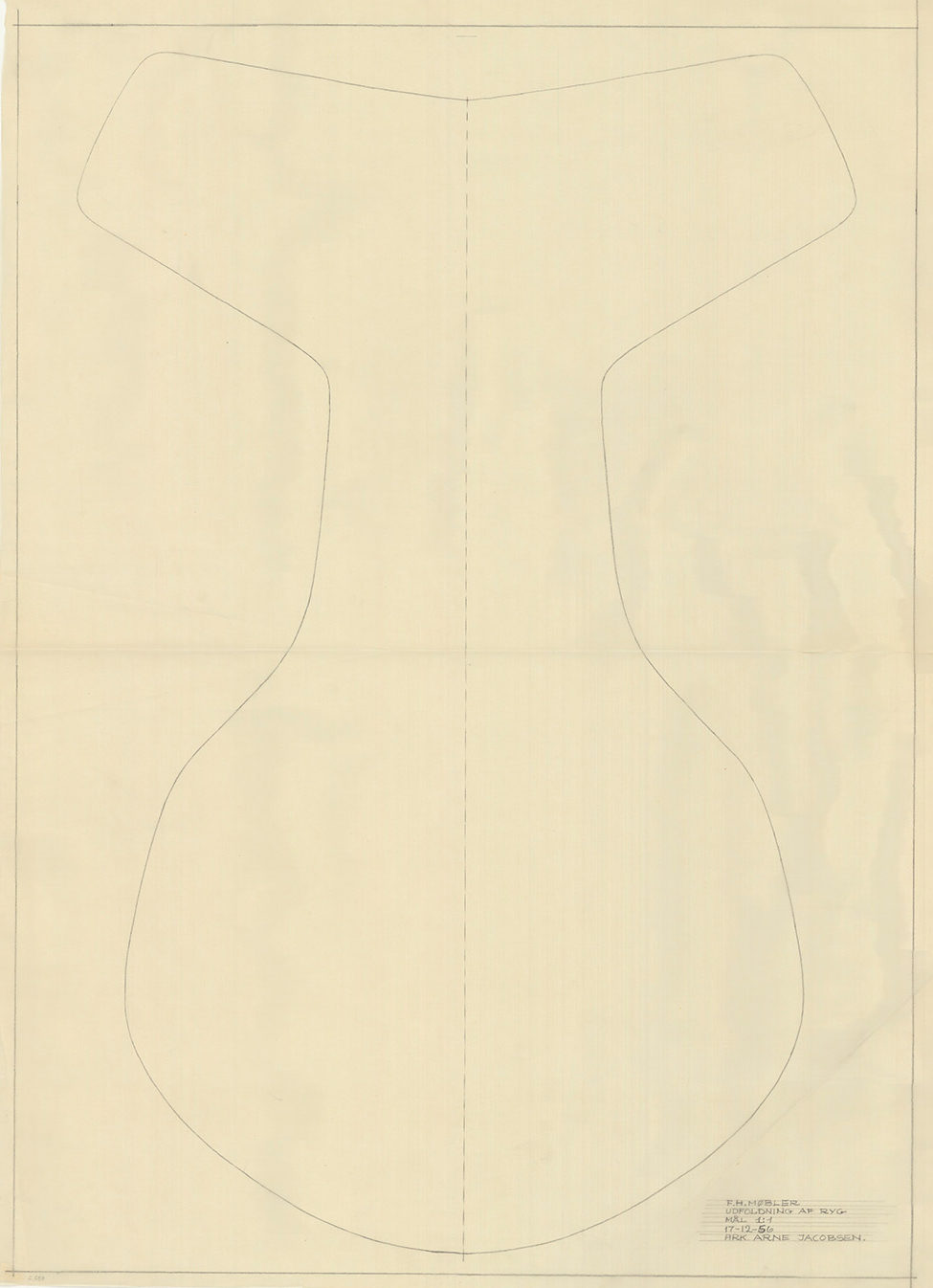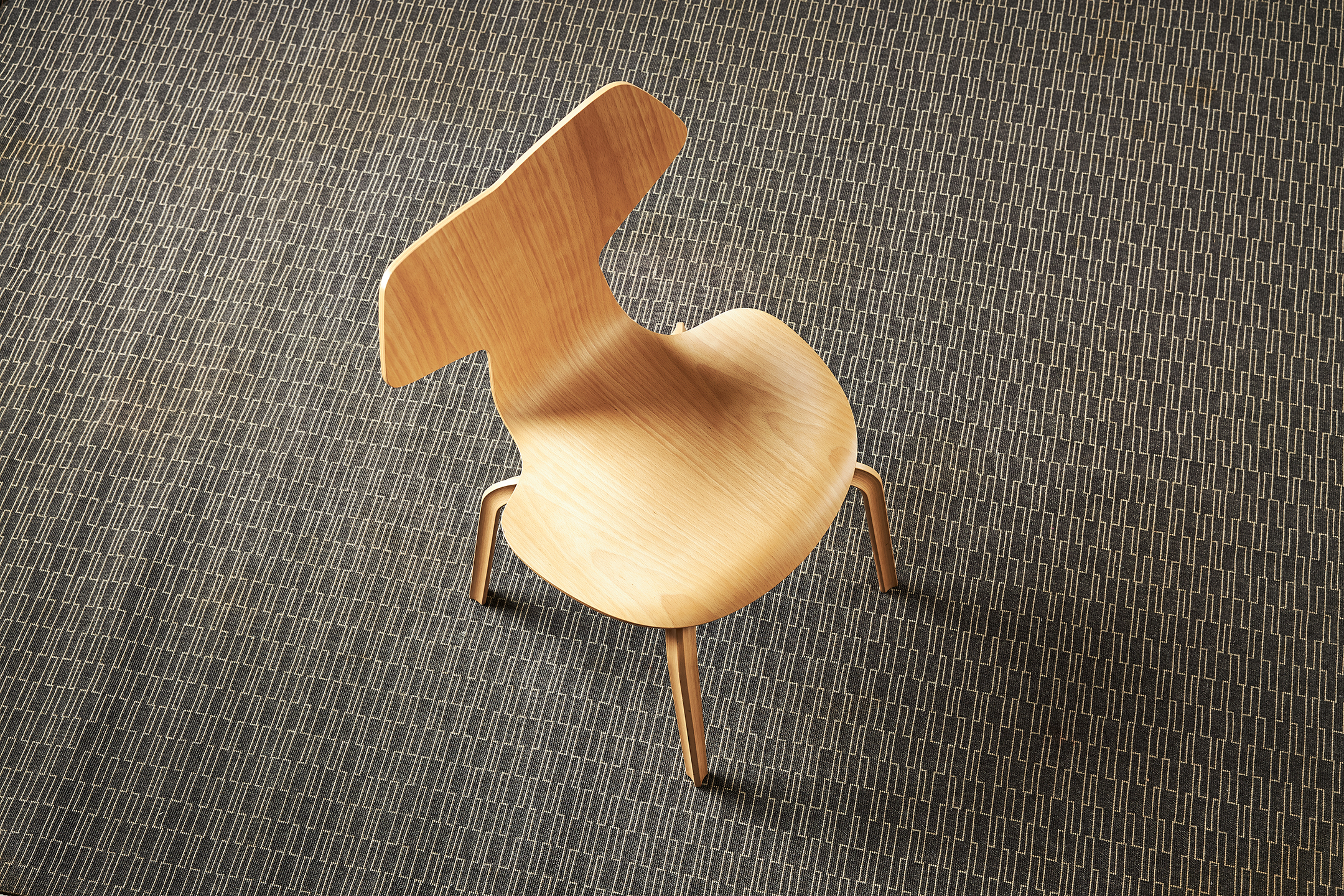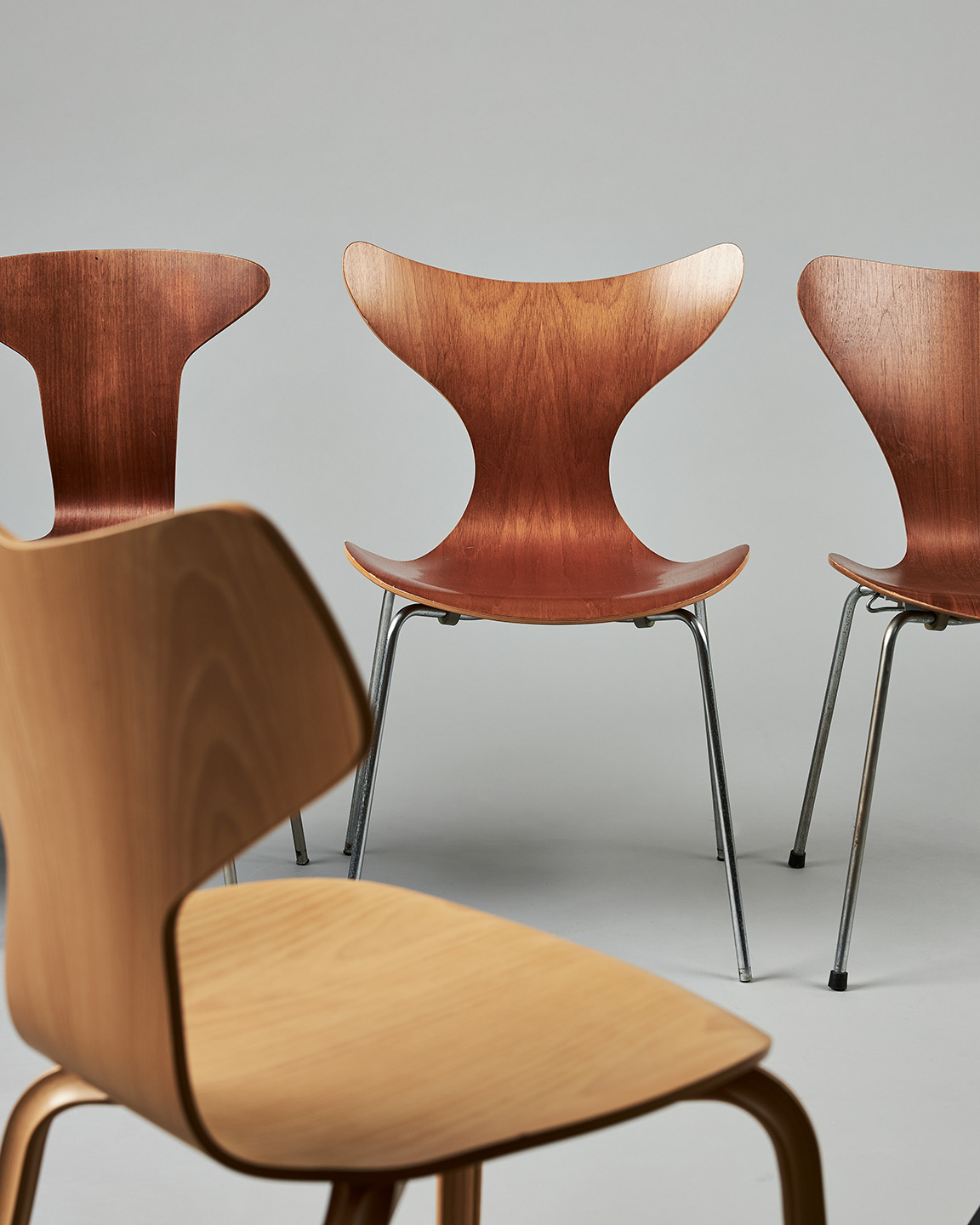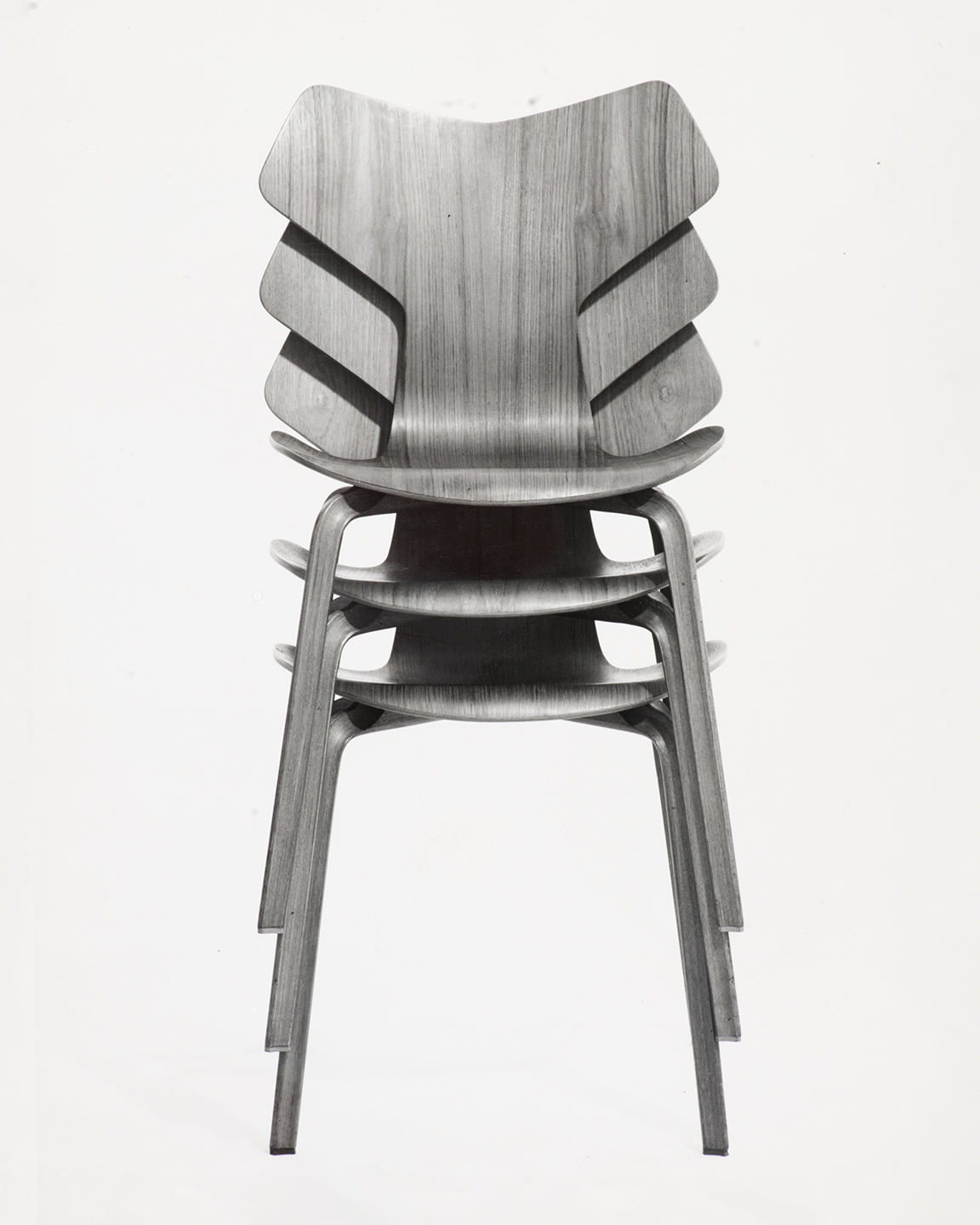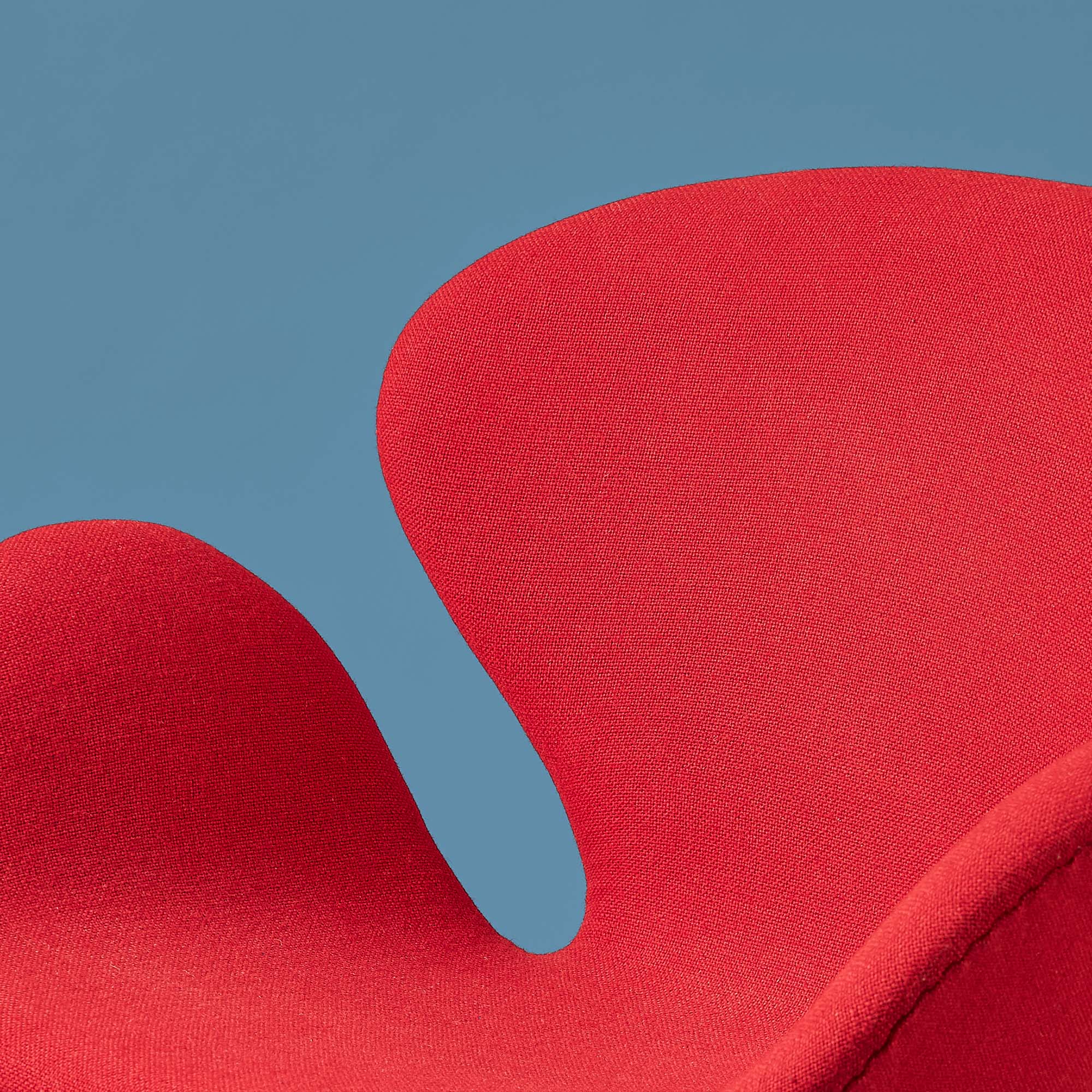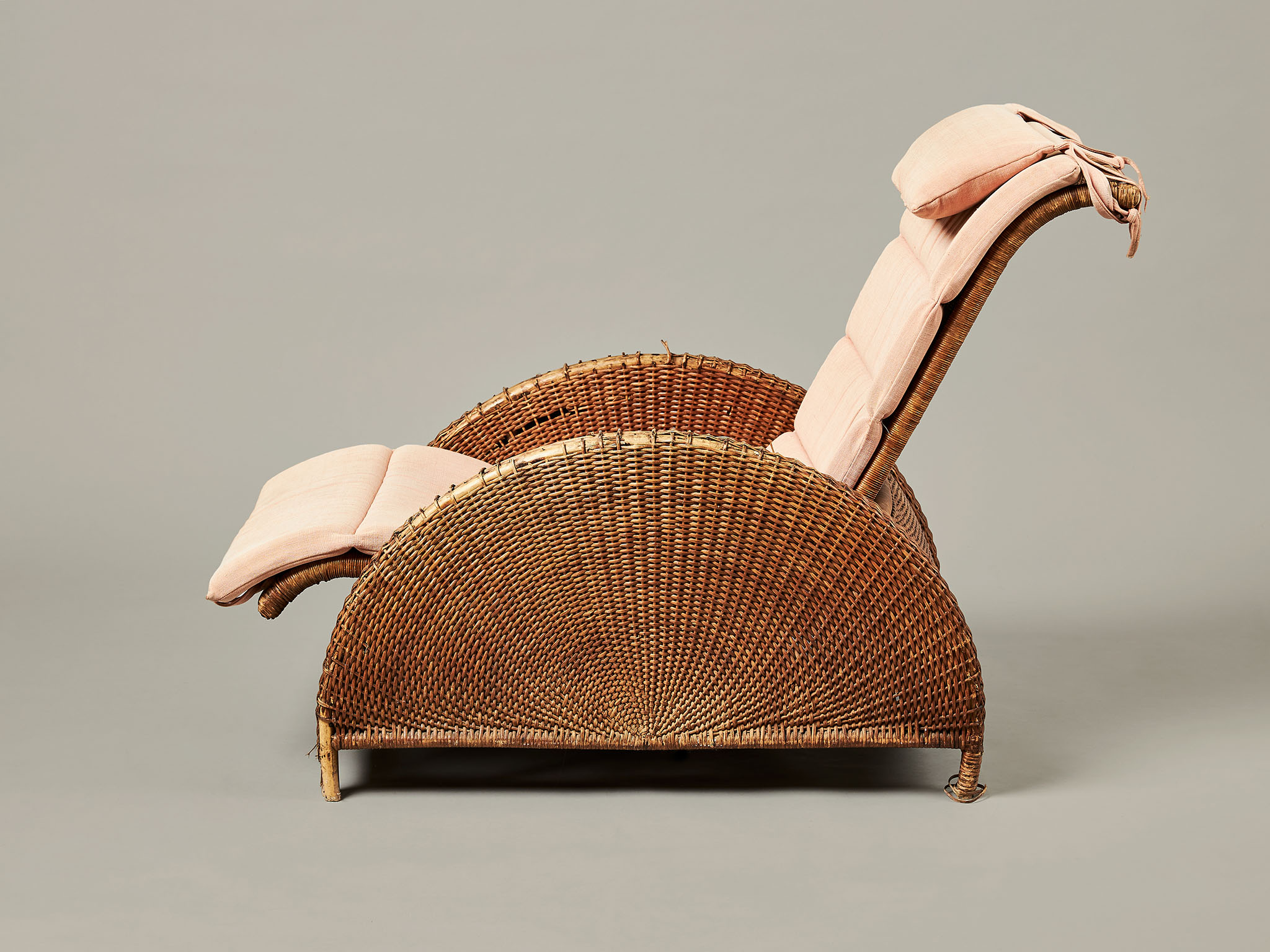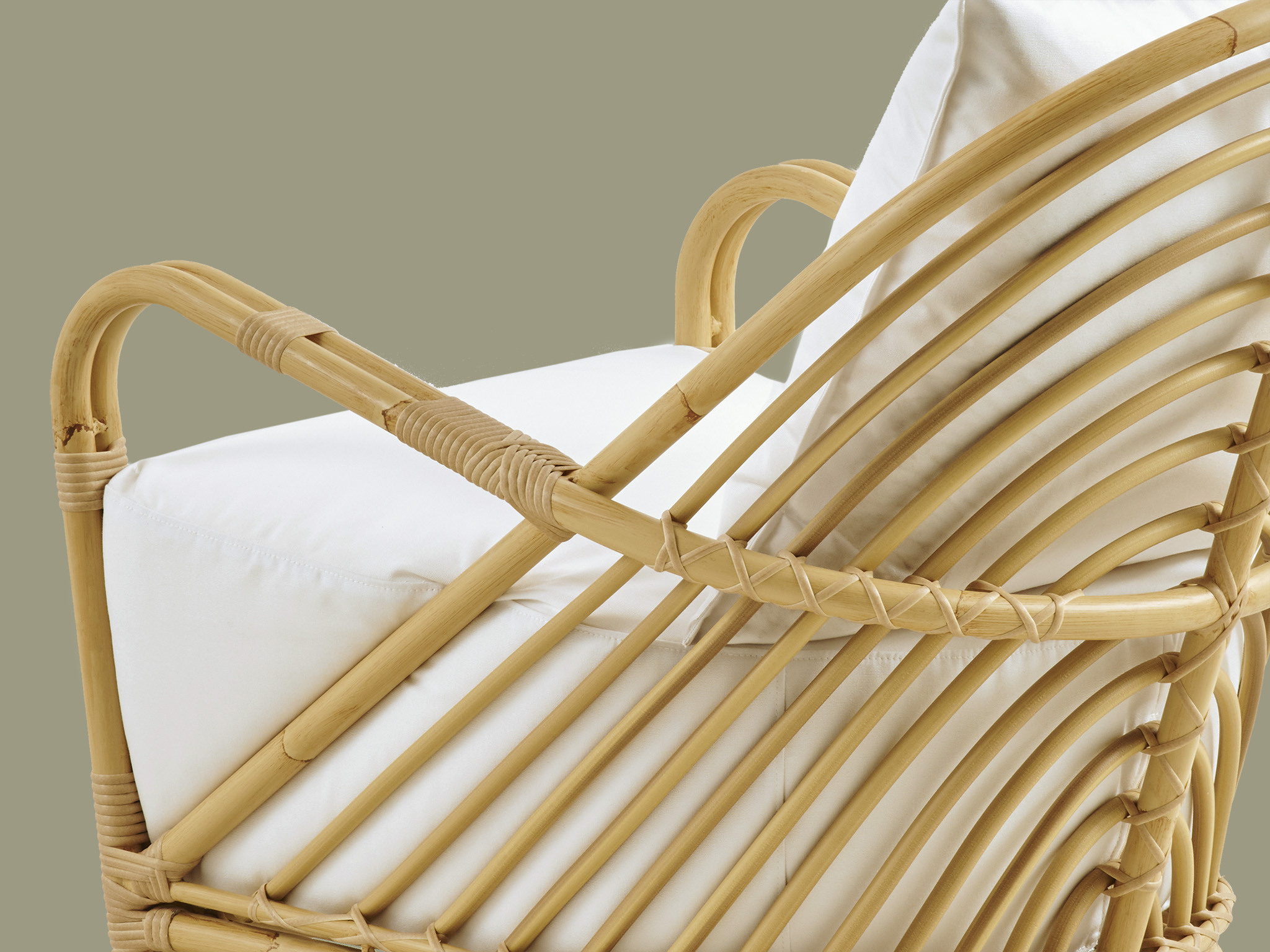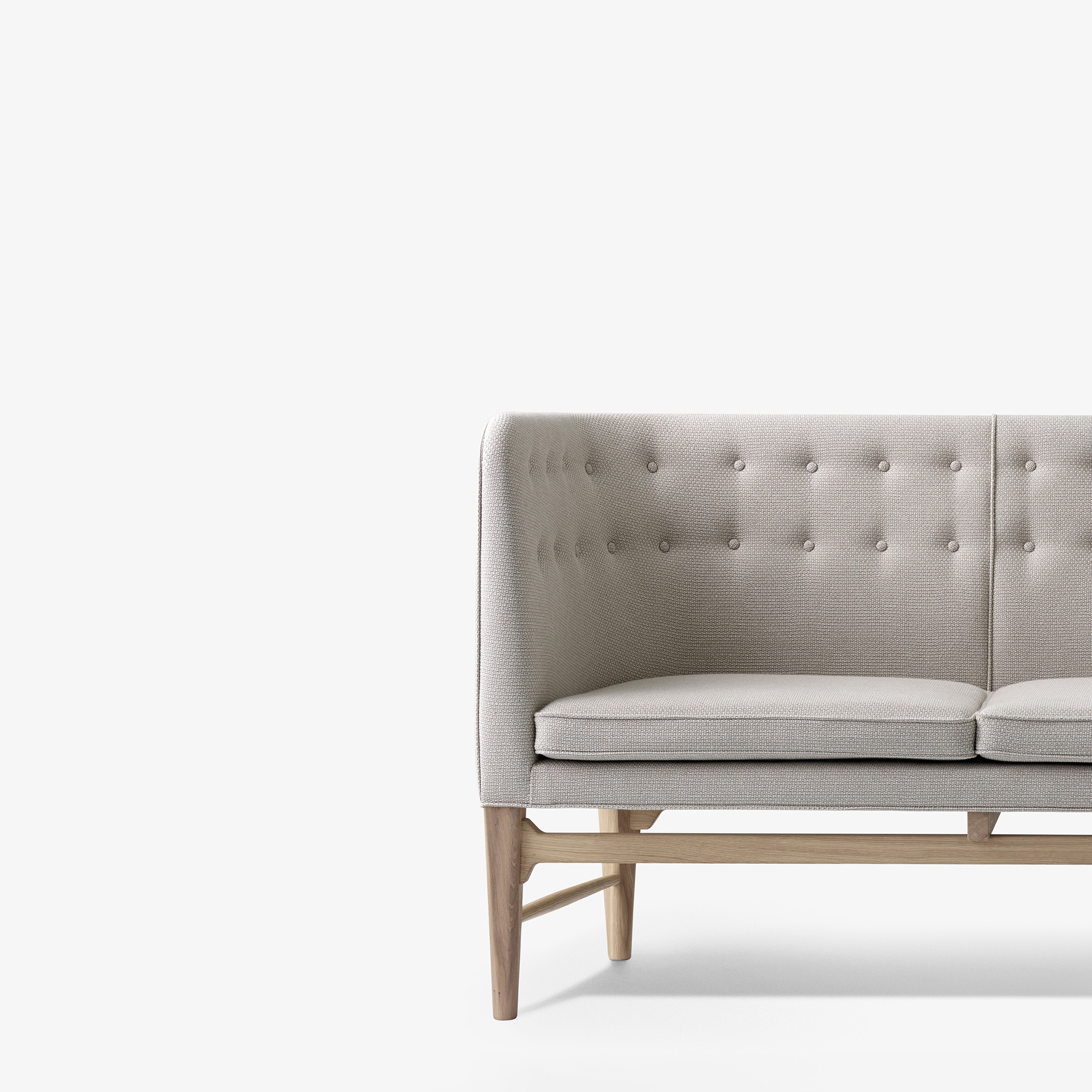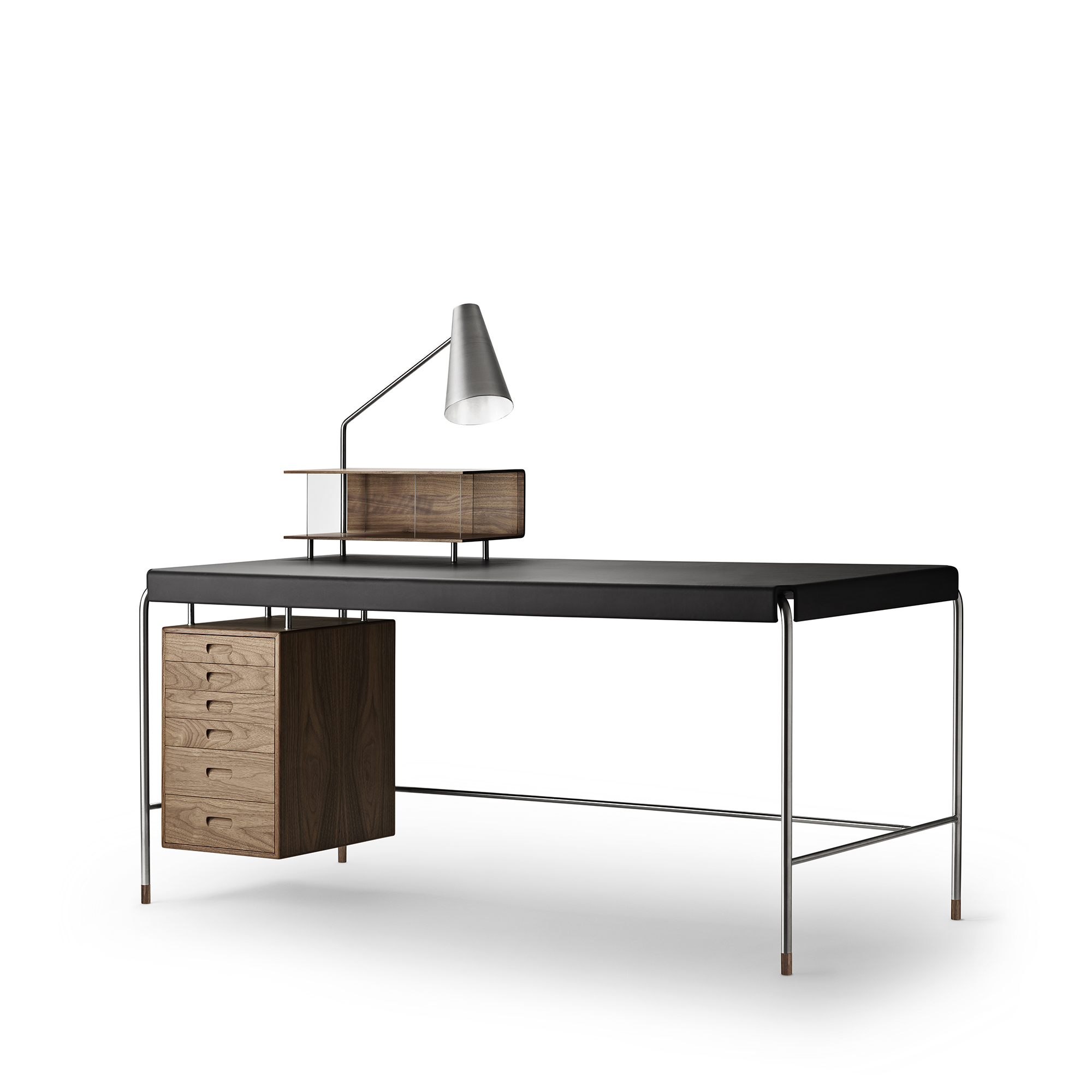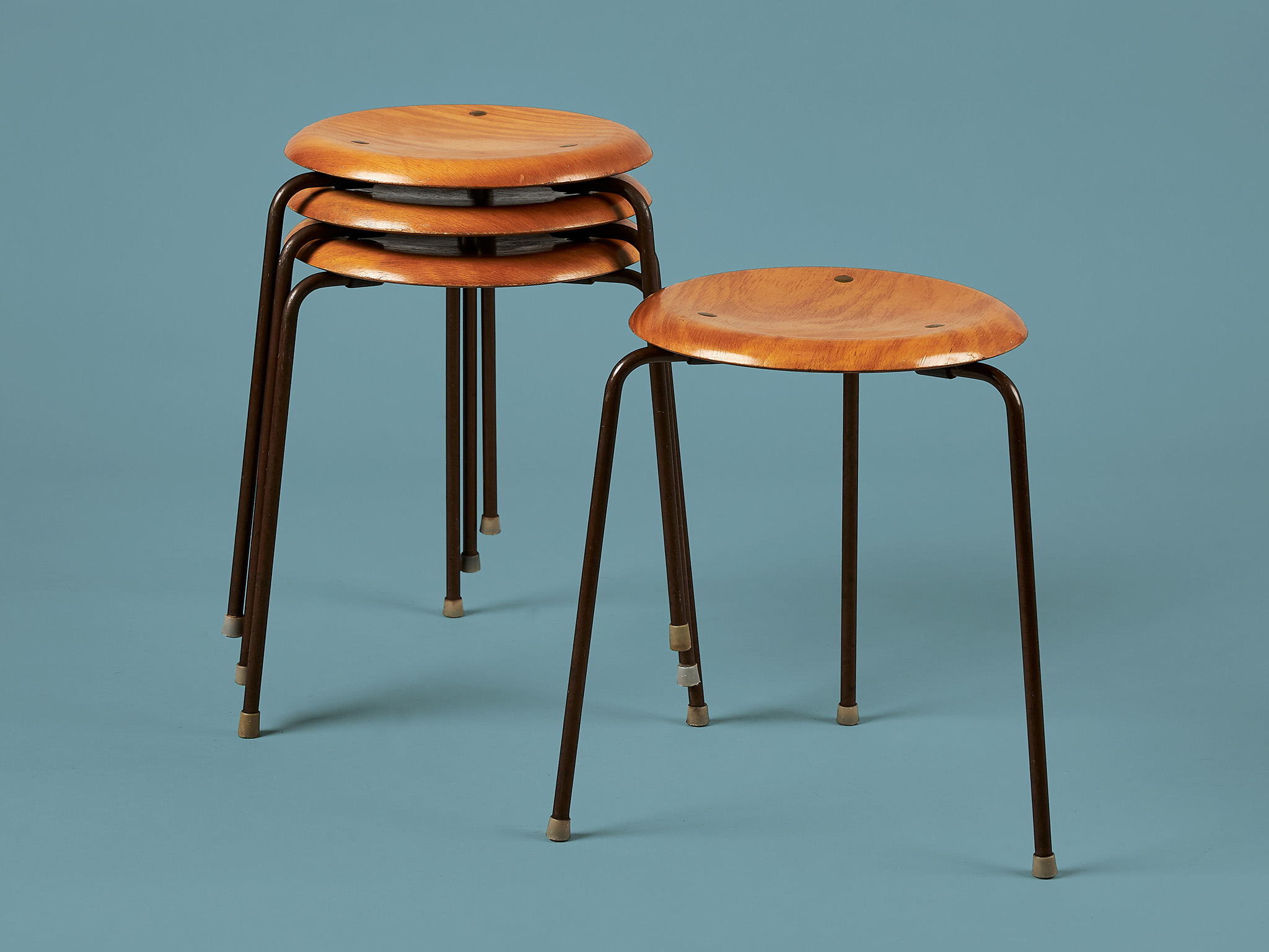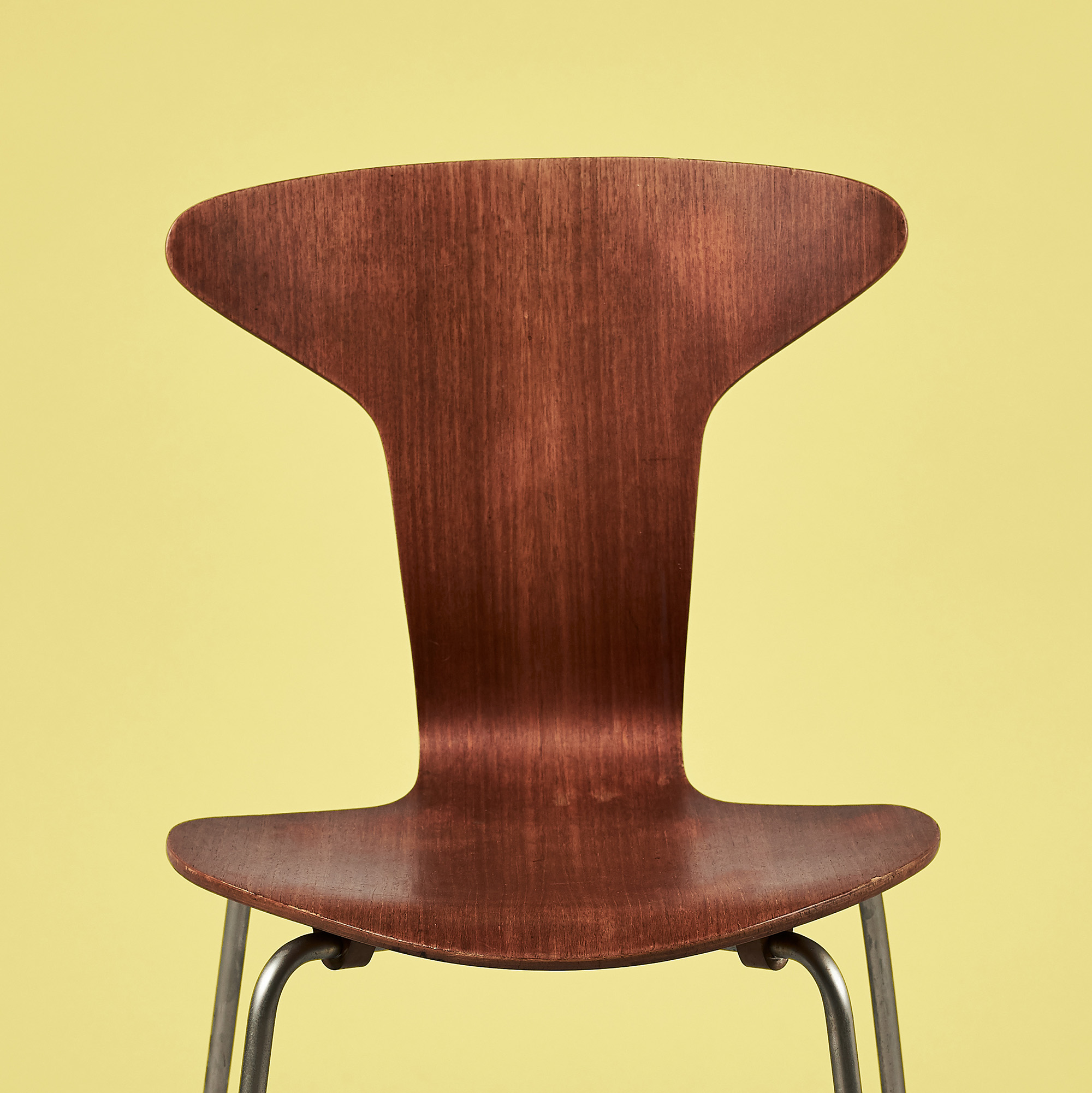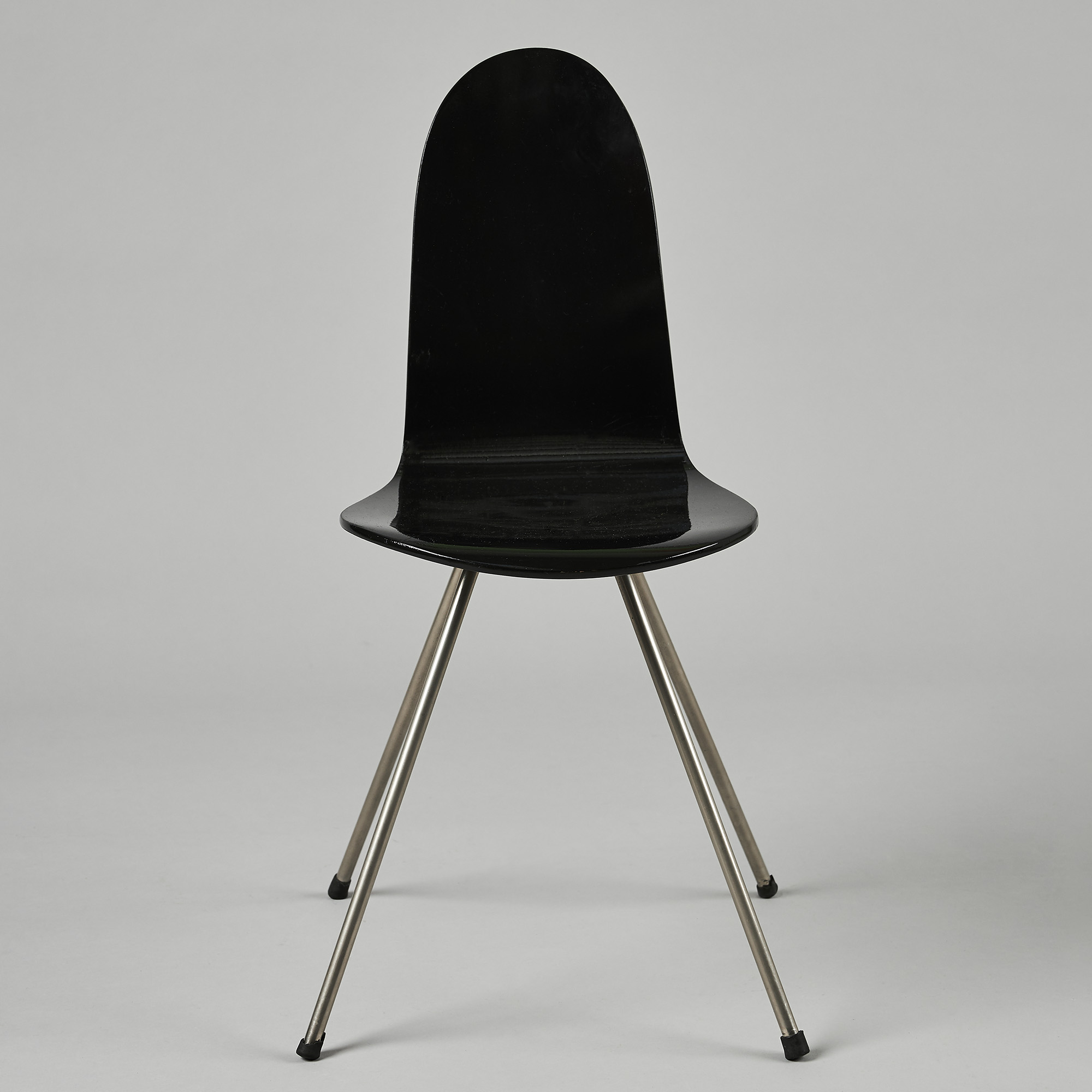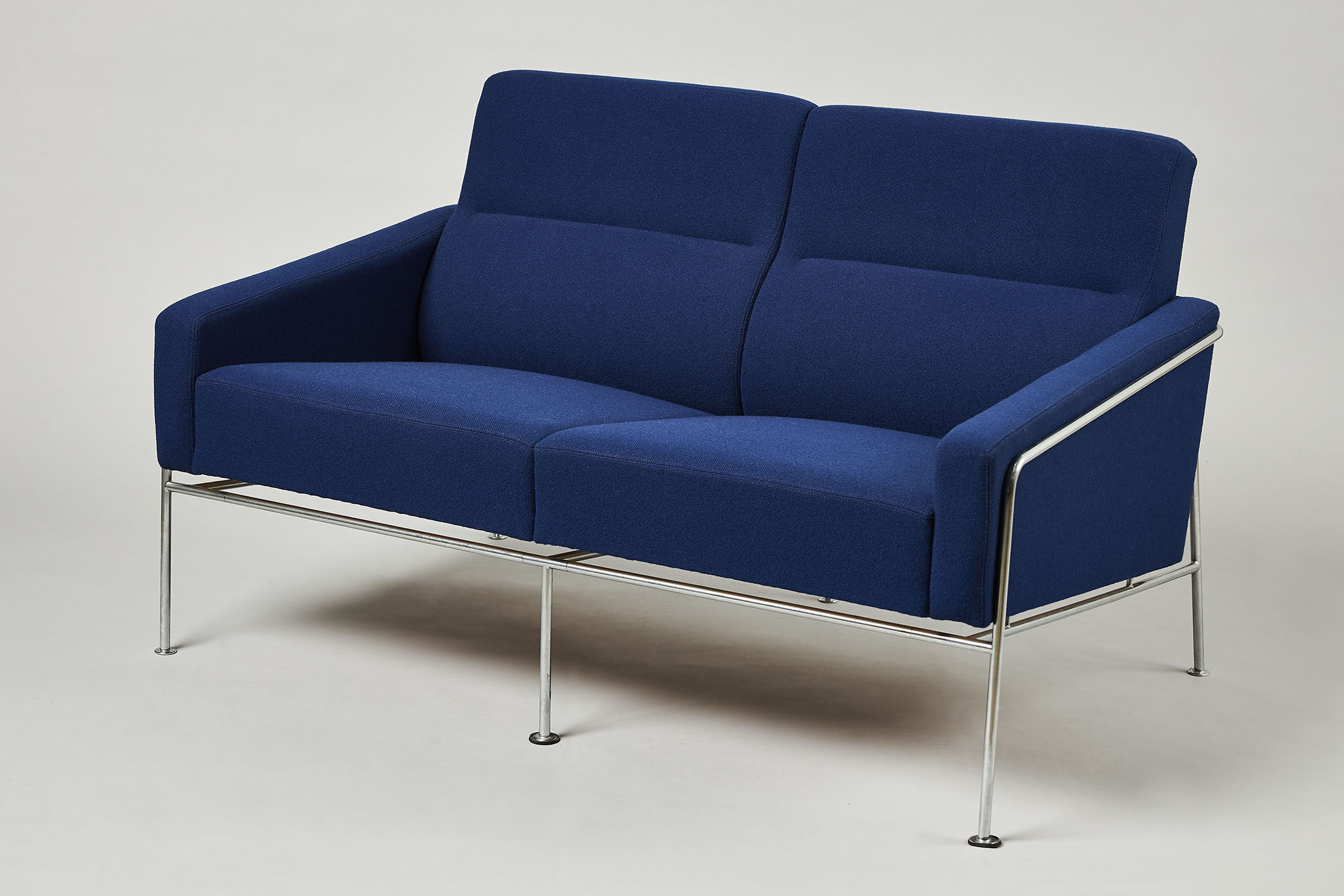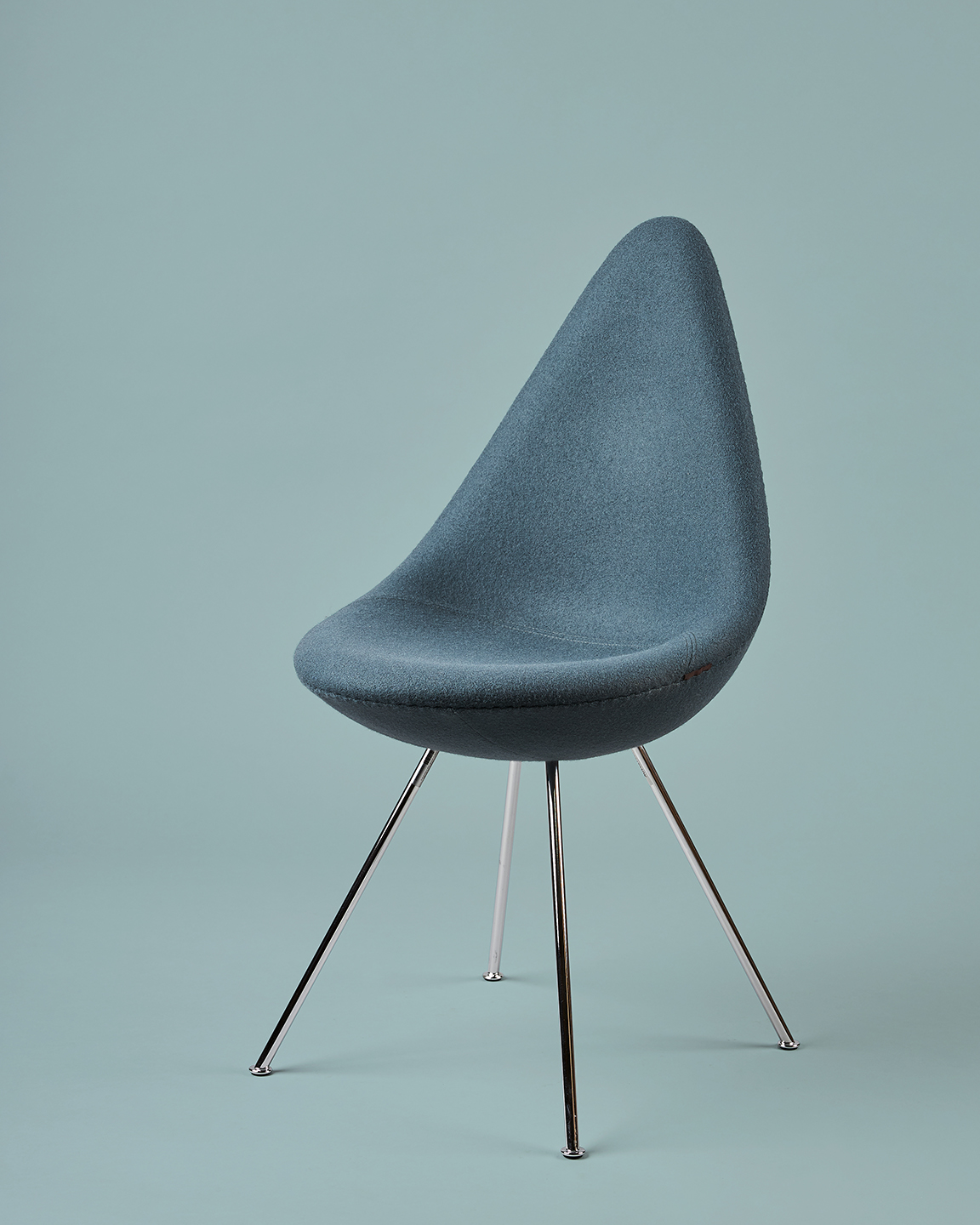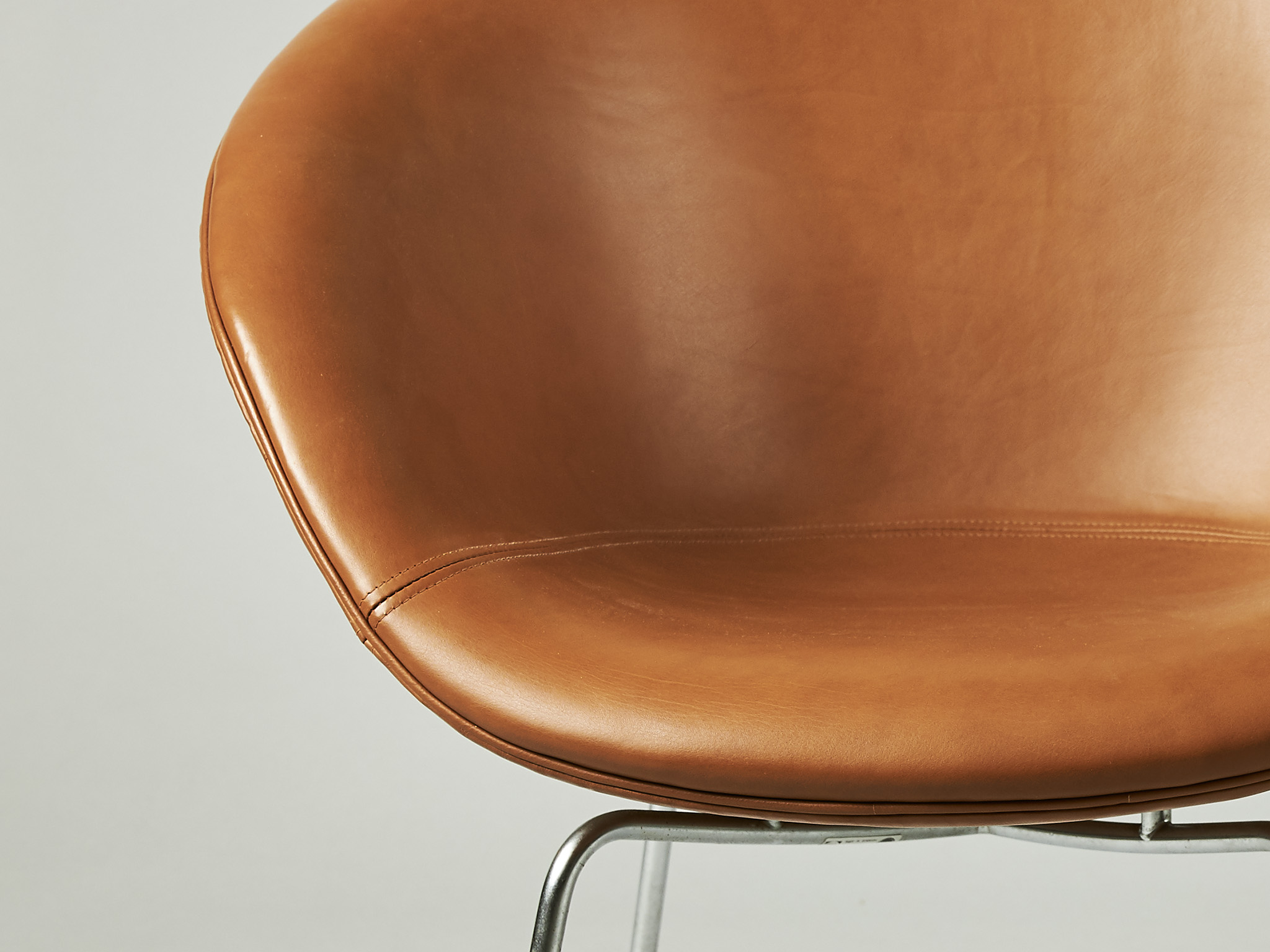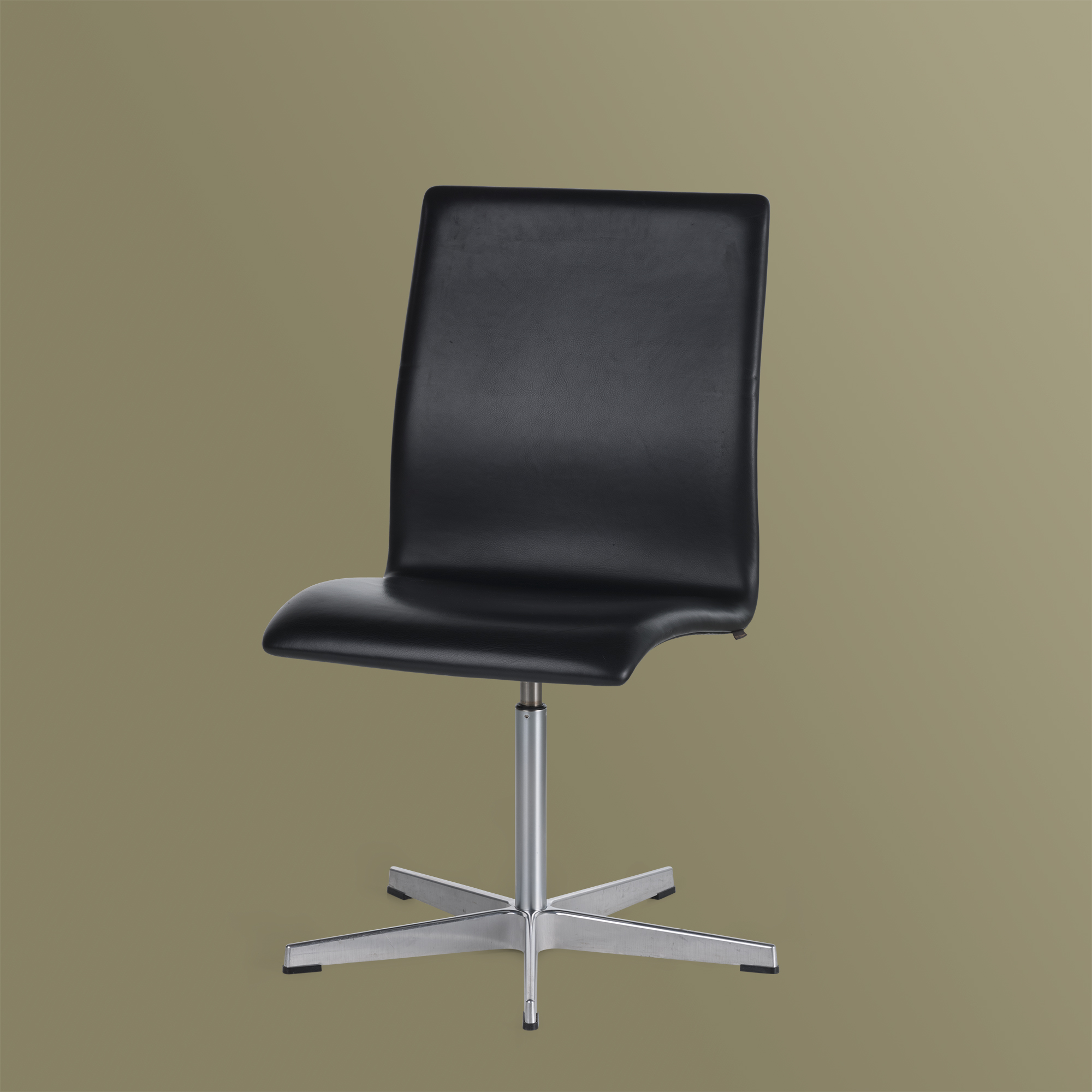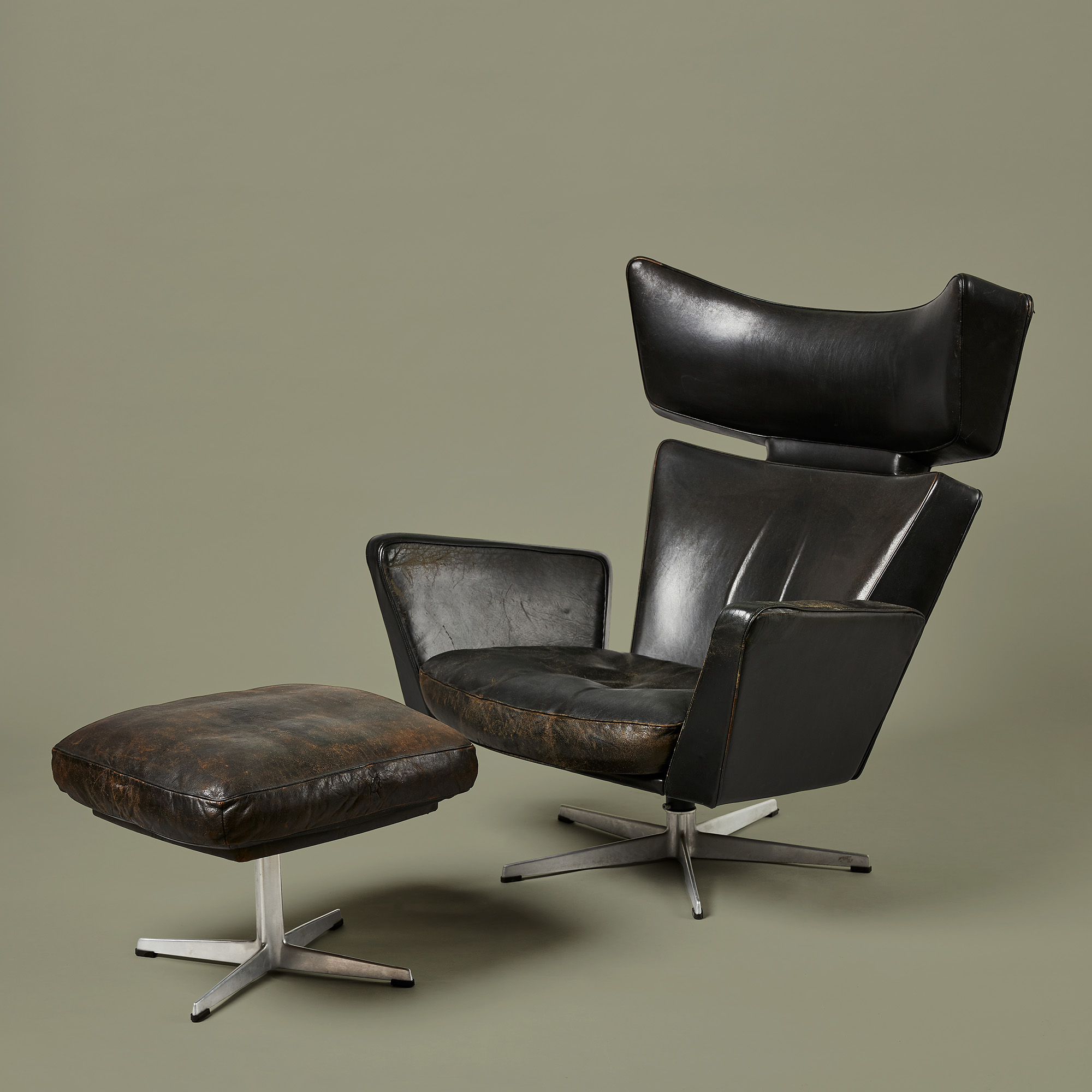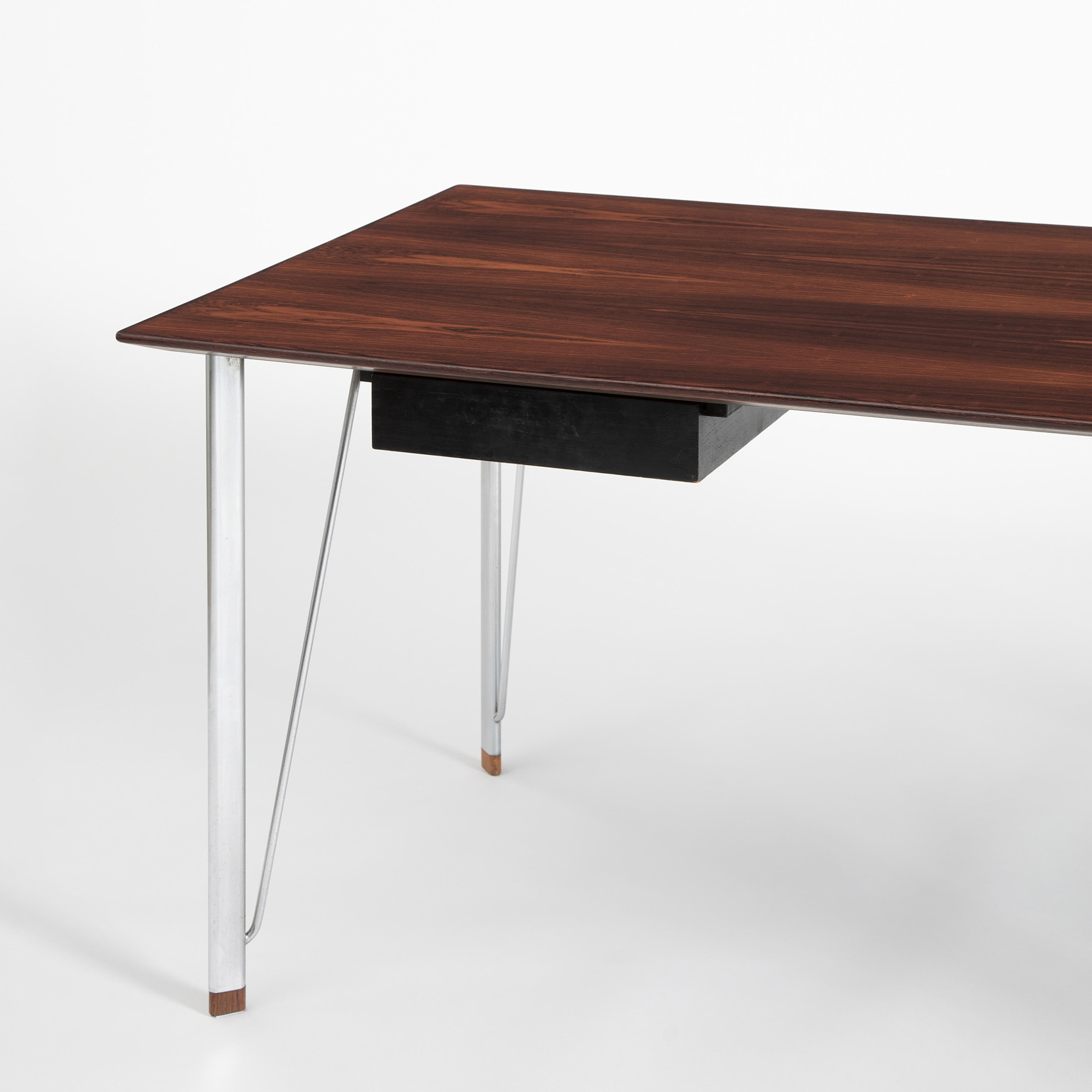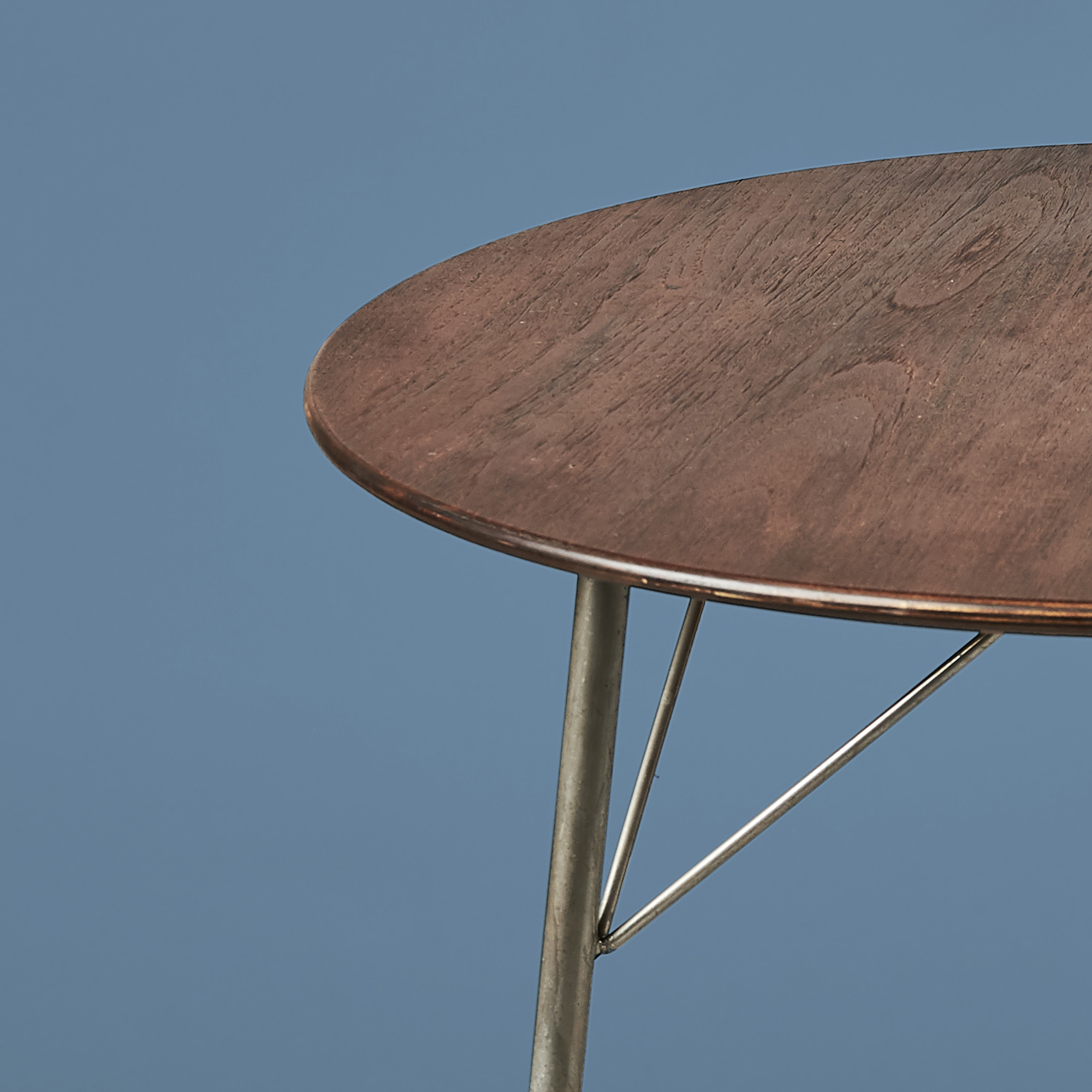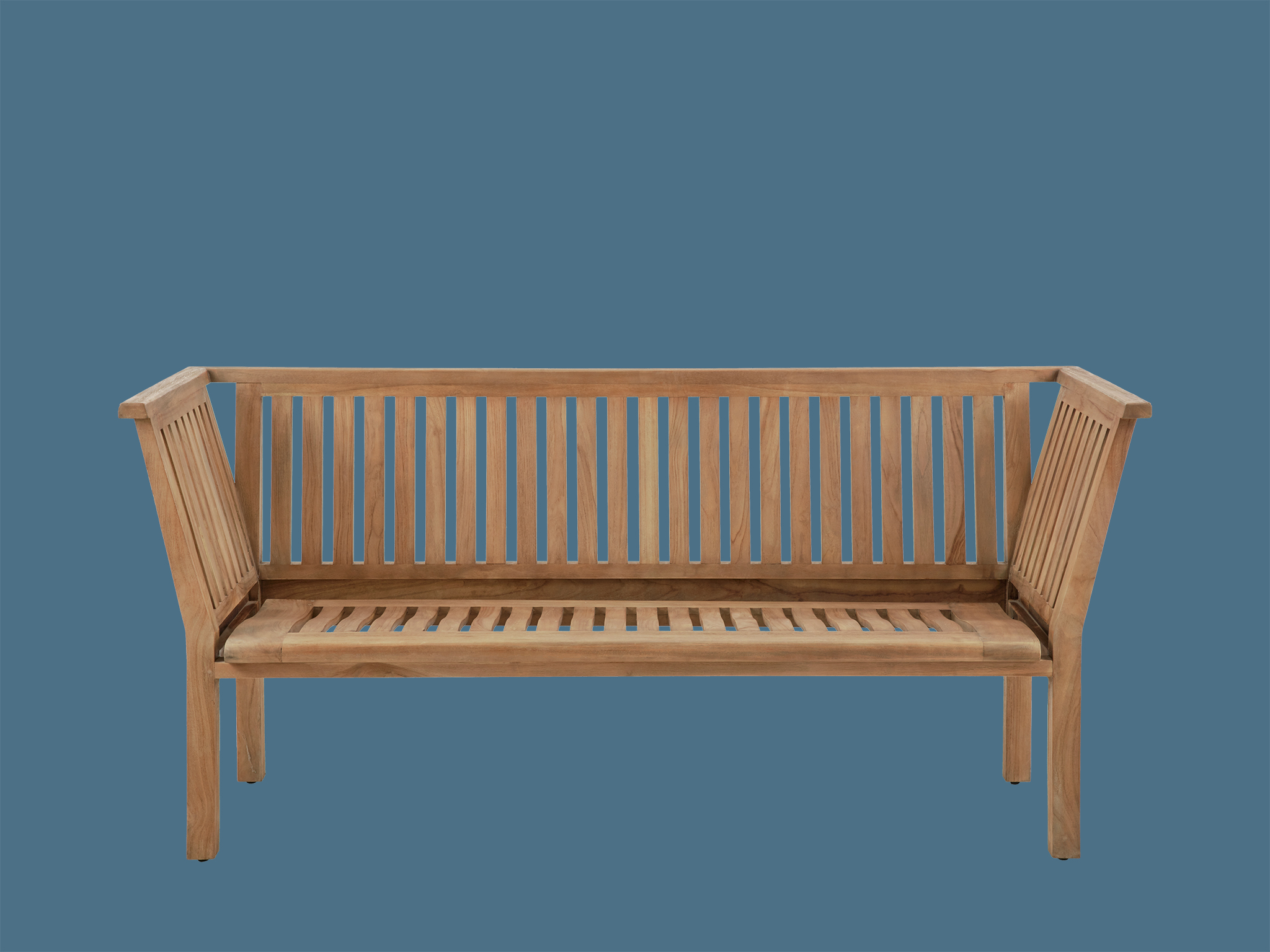Grand Prix was created during a time when Arne Jacobsen was gaining prominence as a furniture designer both in Denmark and in the international scene. Unlike many of his famous designs, the chair was not designed for a specific architecture project. During the 1950s he worked with a number of Danish manufacturers, with Fritz Hansen as one of the most central collaborators, but also designed lamps, cutlery, door knobs and textiles. In 1957, the year he designed the Grand Prix chair, he also created the AJ lamp, the AJ pendant lamp and his avant-garde steel cutlery, all designs that have since become modern design classics.
Arne Jacobsen presented many of the new products in design exhibitions all over Europe. At the Milan Triennial in 1957, he presented several designs, including the AJ cutlery and the Grand Prix chair, which was awarded the Grand Prix prize that it was subsequently named after. That same year, he presented four terraced houses in the important Interbau exhibition in Berlin, in which he and international architects, such as Finnish Alvaar Alto (1898-1976), Swiss Le Corbusier (1887-1965), and German Walter Gropius (1883-1969) and Egon Eiermann (1904-1970), presented their visions of future residential architecture. In one of his terraced houses Arne Jacobsen also presented his own furniture designs, including the new Grand Prix chair, as part of his view of modern Danish interior design.
Sources: Arne Jacobsen Design Archives. / Arne Jacobsen’s drawings. The collection of architectural drawings, The Royal Library – Danish Art Library. / Arne Jacobsen’s scrapbooks. The Royal Library – Danish Art Library. / Stenum Poulsen, K., Skaarup Larsen, A., & Staunsager, S. (2020). Arne Jacobsen – Designing Denmark. Kolding: Trapholt. / Thau, C., & Vindum, K. (1998). Arne Jacobsen. Copenhagen: Danish Architectural Press.
